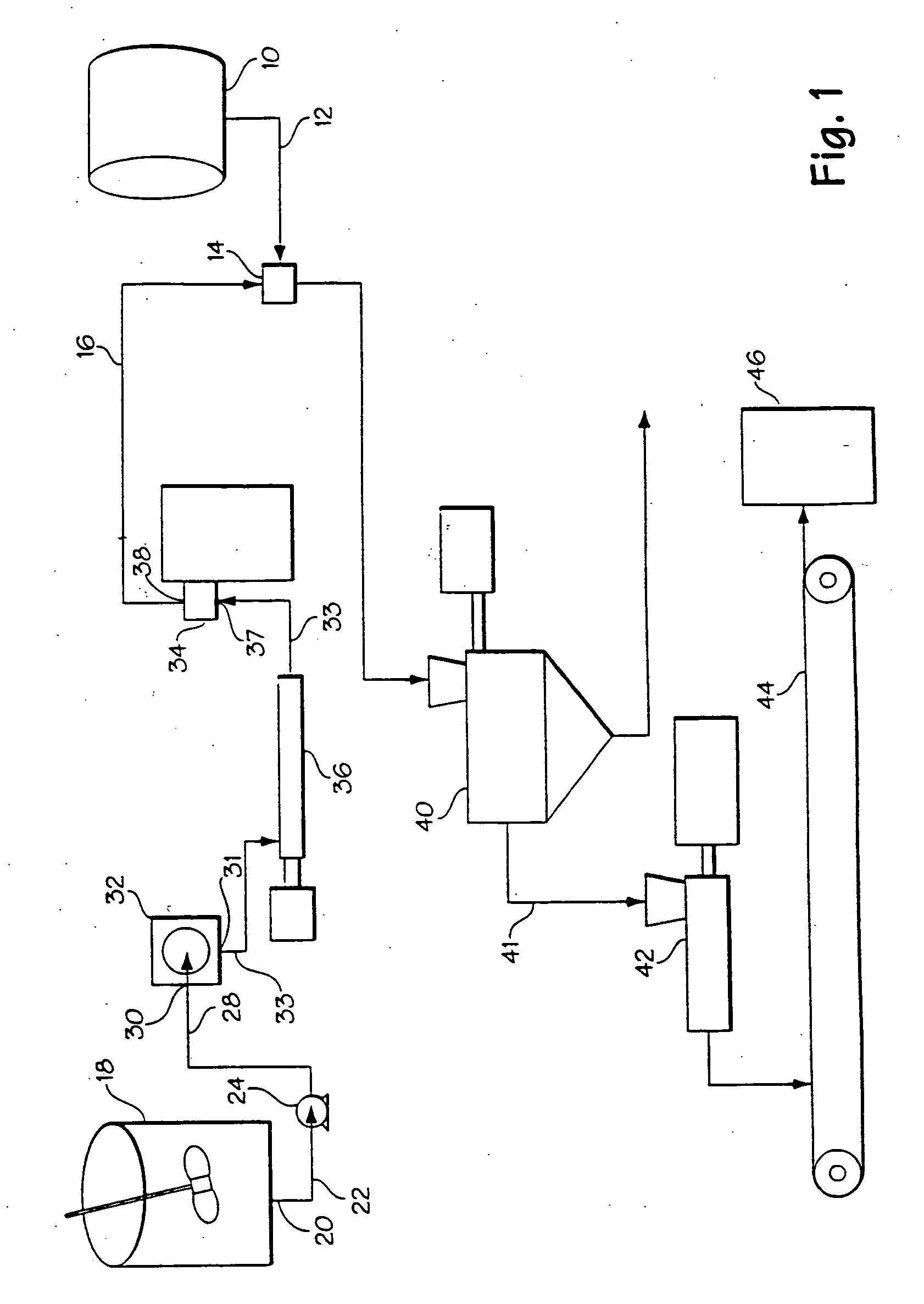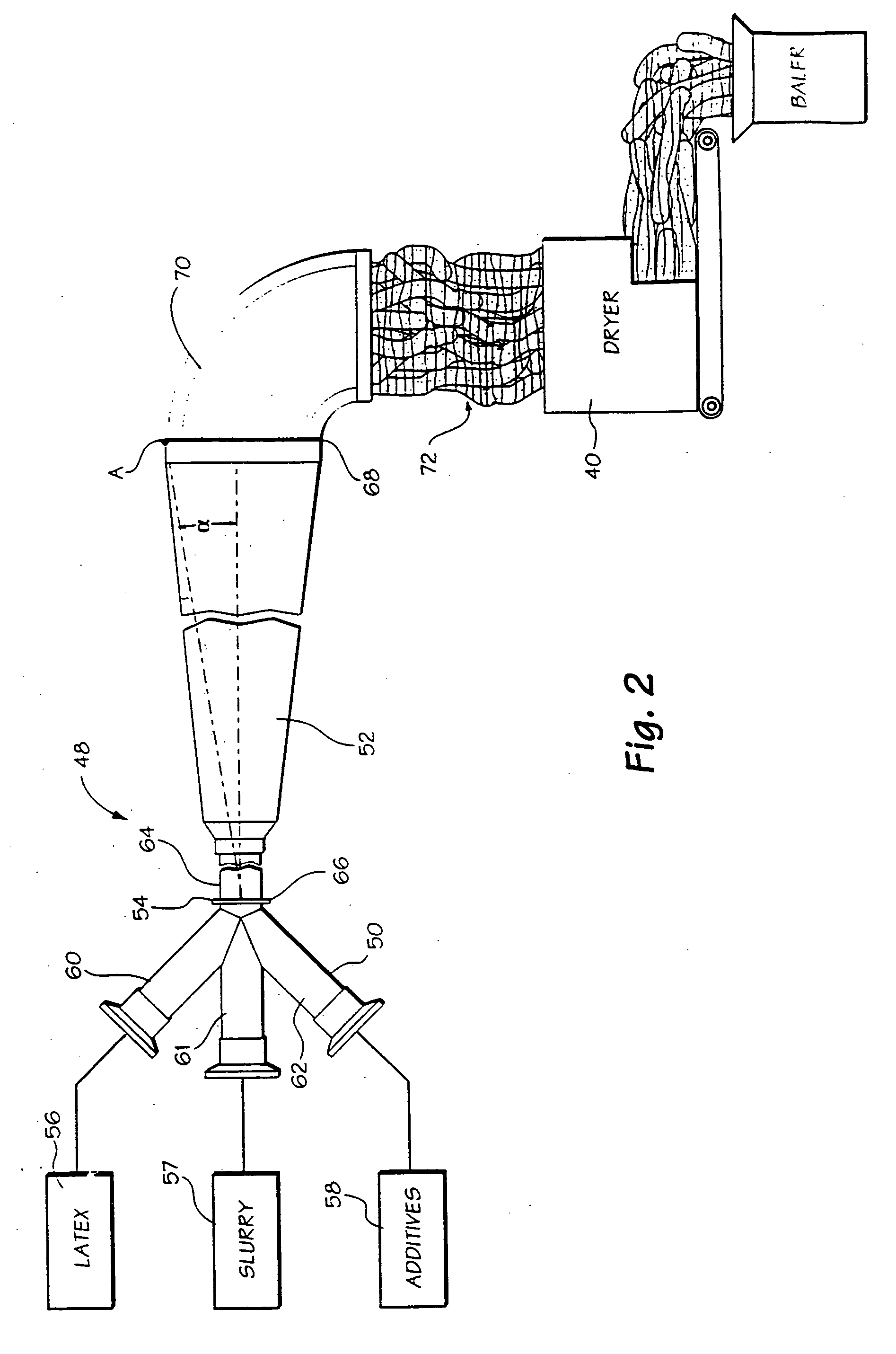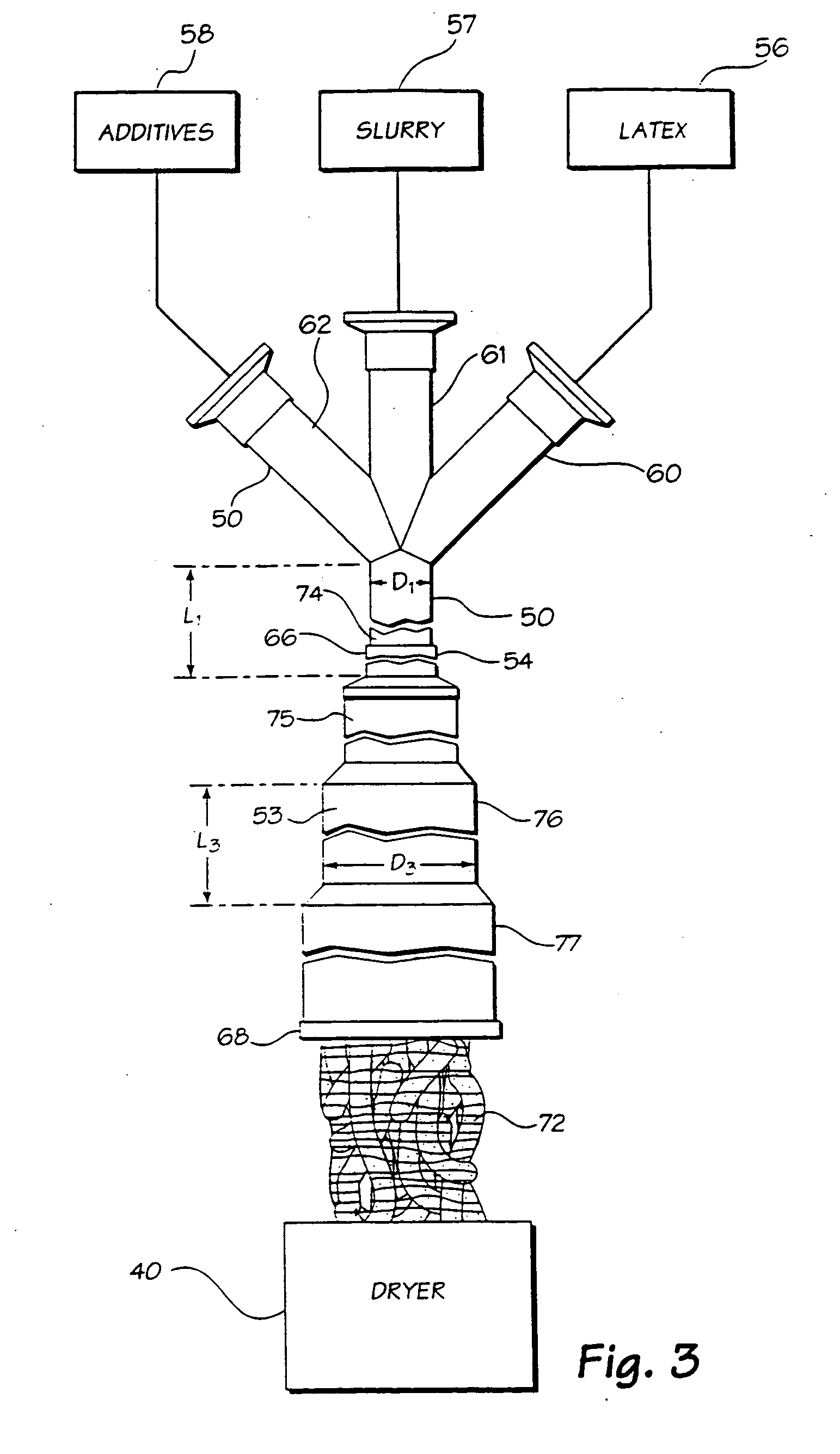Novel elastomer composites, method and apparatus
- Summary
- Abstract
- Description
- Claims
- Application Information
AI Technical Summary
Benefits of technology
Problems solved by technology
Method used
Image
Examples
examples
[0070] The following test procedures were used in the examples and comparisons presented below.
[0071] 1. Bound Rubber. A sample weighing 0.5 g.±0.025 g. is weighed and placed in 100 ml. toluene in a sealed flask and stored at ambient temperature for approximately 24 hours. The toluene is then replaced with 100 ml. fresh toluene and the flask is stored for 4 days. The sample is then removed from the solvent and air-dried under a hood at ambient temperature for 24 hours. The sample is then further dried in a vacuum oven at ambient temperature for 24 hours. The sample is then weighed and the bound rubber is calculated from the weight loss data.
2. MWsol: As used in this disclosure and in the claims, MWsol refer to weight average molecular weight of the sol portion of the natural rubber. Standard GPC techniques for molecular weight measurement were followed in accordance with the following:
[0072] 2.1 Two 10 μm 106 Å columns, a 10 μm 500 Å column and a loom mixed bed ...
example a
[0090] Elastomer masterbatch was produced in accordance with the present invention. Specifically, an elastomer masterbatch was produced comprising standard natural rubber field latex from Malaysia with 52.5 phr filler consisting of carbon black of commercial grade N234 available from Cabot Corporation. The properties of the natural rubber field latex are provided in Table 1 below.
TABLE 1Natural Rubber Latex PropertiesVolatile% Dry% TotalNitrogenFattyML(1 + 4)AdditivesRubberSolids% AshppmAcid@100 C.0.15%28.434.20.380.3660.05268HNSa0.3%NH3,ZnO,TMTDb
aHNS: hydroxylamine neutral sulfate, Mooney viscosity stabilizer.
bZnO / TMTD: used for biological preservation, typically 0.025% of 1:1 mixture.
[0091] The full compound formulation is set forth in Table 2 below, and is representative of a commercial truck tire tread known to have excellent resistance to reversion during cure.
TABLE 2Masterbatch FormulationIngredientParts by Wt.Rubber100Carbon Black52.5ZnO4.0Stearic acid2.06PPD (antioxida...
example b
[0097] A control masterbatch was prepared by dry mastication. The control employed the same formulation as Example A (see Table 2 above), except that the natural rubber was SMR 10 rather than latex. It was prepared by premastication of the rubber in a 0° C. Banbury mixer (approximately 3 kg) at 50 rpm using 10 phr carbon black. The premastication was performed for approximately 3 min. to a total of 800 MJ / m3.
PUM
| Property | Measurement | Unit |
|---|---|---|
| Fraction | aaaaa | aaaaa |
| Temperature | aaaaa | aaaaa |
| Temperature | aaaaa | aaaaa |
Abstract
Description
Claims
Application Information
 Login to View More
Login to View More - R&D
- Intellectual Property
- Life Sciences
- Materials
- Tech Scout
- Unparalleled Data Quality
- Higher Quality Content
- 60% Fewer Hallucinations
Browse by: Latest US Patents, China's latest patents, Technical Efficacy Thesaurus, Application Domain, Technology Topic, Popular Technical Reports.
© 2025 PatSnap. All rights reserved.Legal|Privacy policy|Modern Slavery Act Transparency Statement|Sitemap|About US| Contact US: help@patsnap.com



